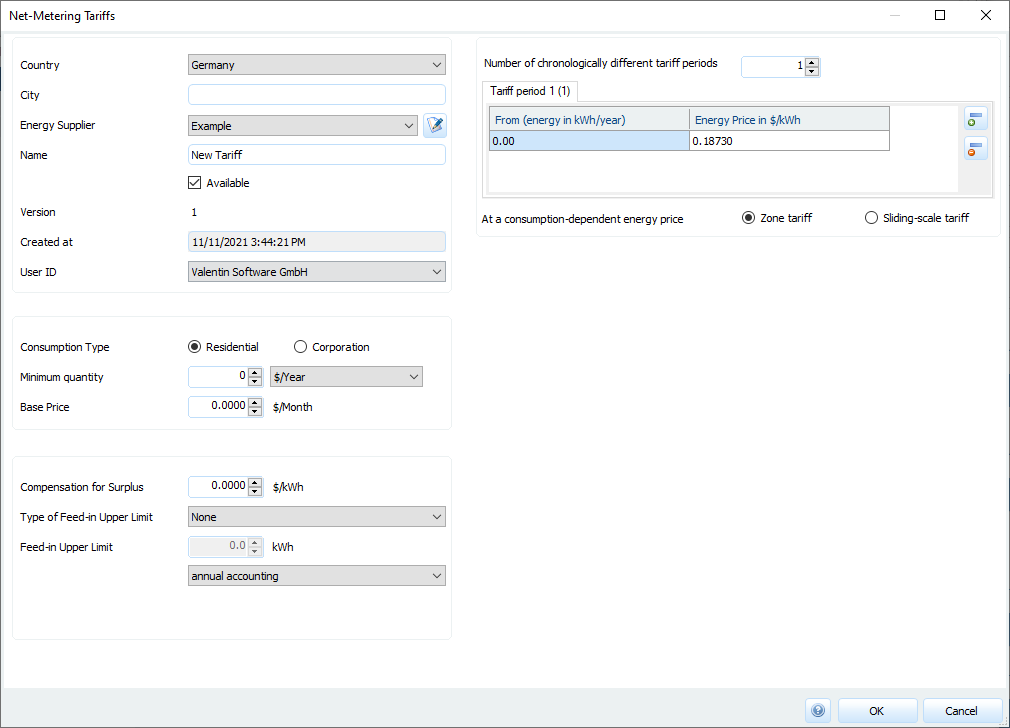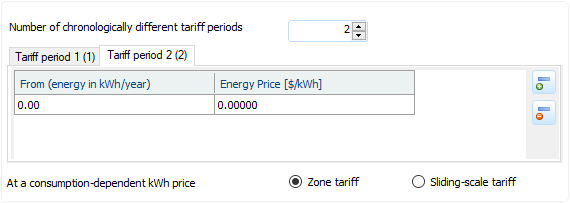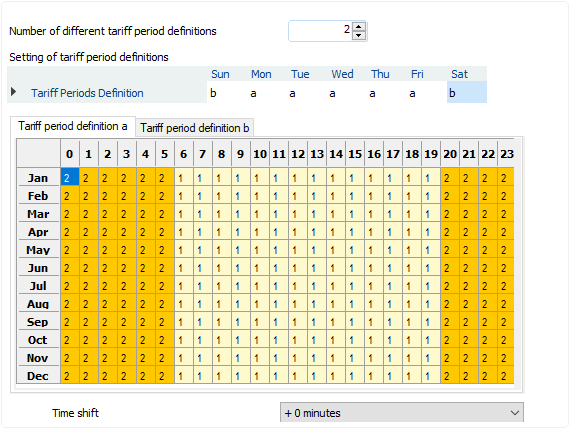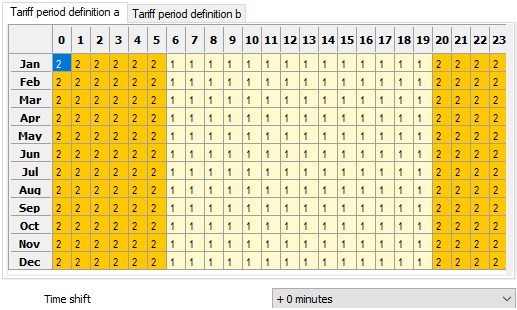Net-metering tariffs
Creating a new entry
-
Specify country
-
(optional) Specify location
-
(optional) Select energy provider
The button can be used to display all energy suppliers and to create new ones.
button can be used to display all energy suppliers and to create new ones. -
Specify name
e.g. Berlin Basis Privatstrom -
Select User ID
The selected user ID determines the visibility of the record. -
(optional) Select type of consumption
-
Select accounting type
- annually
- monthly
-
Enter minimum quantity
This amount must be generated or indirectly purchased as electricity at least annually.If the pure electricity costs are lower than the agreed minimum quantity, the minimum quantity must nevertheless be compensated or paid for to the energy supply company. -
Specify basic price
This amount is independent of the electricity price or energy price and is due monthly. -
Specify compensation for surplus
Surpluses at the end of the year are valued at the remuneration for surplus as feed-in. -
Specify the type of feed-in limit
-
Select Number of different tariff times
-
Specify tariff periods
- The energy price with the associated energy consumption must be selected.
- Using the
 button, entries can be added or deleted using the
button, entries can be added or deleted using the
 button.
button. - By right-clicking on the tariff times, these can be renamed, for example to high tariff and low tariff.
-
Select the price limits for consumption-dependent work prices
-
Zone tariff
An average energy price is calculated for all energy areas up to the amount of energy consumed annually. The amount of energy consumed annually is first divided between the individual work prices or zones and then added up. -
Graduated tariff
With the graduated tariff, the energy price changes abruptly when a certain amount of energy is consumed. According to this, the energy price results directly from the amount of energy consumed.
Example
Working price 1: from 0 kWh ; 1 EUR/kWh
Working price 2: from 3000 kWh ; 0,5 EUR/kWh
Amount of energy used: 5000 kWh
Feed-in tariff paid out
Zone tariff: 0,8 €/kWh $ \left( \frac{3000 \text{ kWh}}{5000 \text{ kWh}} \cdot 1 \text{ €/kWh} + \frac{2000 \text{ kWh}}{5000 \text{ kWh}} \cdot 0,5 \text{ €/kWh} = 0,8 \text{ €/kWh} \right)$
Graduated tariff: 0,5 €/kWh+
-
-
Tariff time definition (available if tariff times > 1)
-
Select the number of different rate time definitions
-
Define assignment of rate time definition
A separate rate time definition is created for each weekday on which the rate times differ. In the table Assignment of Rate Time Definitions, the corresponding rate time definition is assigned to each weekday by selecting the corresponding letter (a,b,…). -
Allocation of work prices
In this table, each hour of the day is assigned one of the previously defined work price definitions. Select the times in which the same work price is to apply. Then use the right mouse button to select the corresponding energy price or use the keyboard to enter the number of the energy price. -
Specifying the time difference
Changes the times in the rate definition by the specified value. For example, if +30 minutes is entered, the value changes from 8:00 to 8:30.
-
See also




